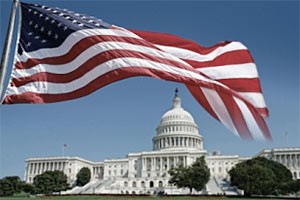Renew the Africa Trade Pact
Good ideas sometimes die not from opposition but from mere neglect. Case in point: the African Growth and Opportunity Act.
This is a free-trade deal between the U.S. and 39 sub-Saharan countries that expires in September. As Congress debates whether to give President Barack Obama authority to conclude the better-known Trans-Pacific Partnership, the Africa agreement is in danger of slipping between the cracks.
Its expiration would be a heavy blow to the African countries that have received duty-free treatment on exports to the U.S. since 2001. Rather than simply renewing the pact, Congress should broaden it to cover more goods, including agricultural products and textiles -- and extend it for, say, 15 years instead of the usual three.
The Senate recently passed a simple 10-year extension -- which would certainly be better than nothing. But the measure now awaits approval in the House, and that's far from assured. Attention is bound to focus elsewhere.
The Africa deal has provided U.S. jobs and millions more consumers for American goods. The criteria that countries must satisfy in order to participate have promoted democracy and market economics. The agreement has also helped counter China's growing influence.
Since the deal was first done, sub-Saharan Africa's record of growth has been good: 6.3 percent a year, more than double the rate of the previous decade and two percentage points higher than the global average. This year, the region is forecast to grow by 4.5 percent, outpacing Asia's projected 4.3 percent.
The trade deal has produced some impressive successes. For instance, employment in Lesotho's clothing industry rose to about 46,000 in 2011 from 19,000 in 1999. U.S. retailers, including Gap and Kate Spade, now source goods in sub-Saharan Africa for export to the U.S. Apparel exports were worth $5 billion in 2013, up from $1.3 billion in 2001.
Africa's growing middle class should be of interest to U.S. exporters. McKinsey estimates that the number of African households making above $5,000 a year, the point where discretionary spending begins, will rise from 85 million in 2008 to 128 million in 2020.
Skeptics have a point in saying it's not enough for the U.S. to throw open its doors when sub-Saharan countries lack reliable electric power, railroads and other basic infrastructure. The highway from Kenya's capital, Nairobi, to the border with Tanzania is so clogged it can take hours to drive five miles. Delays at border crossings and ports can be absurd. Container transit times from the port of Mombasa, on Kenya's southeast coast, to Rwanda's capital, Kigali, have been cut to six days from 21 days -- a big improvement, but still too long.
A bigger and better trade pact won't solve all of Africa's problems, but that's hardly the test. As somebody once said, "Money isn't everything, but lack of money isn't anything." The same goes for trade. Obama will visit Kenya in July -- a fine occasion to celebrate an extended and improved African Growth and Opportunity Act.


